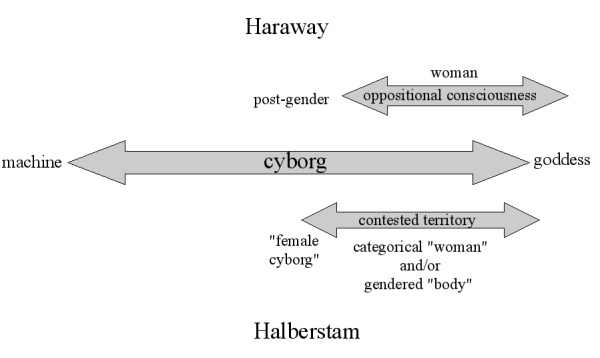Abortion, Gender, and Feminism
After class on Wednesday, I had that “oh, I really wanted to say something in class but there wasn’t time” thought, and then realized — hey, we have a blog, I can continue the discussion outside the class. It was relieving.
So, just had one insight into Benazir Bhutto’s relation to gender and technology which I hope adds to our discussion. Bhutto was against abortion (pro-life). A few sites I checked out said that feminists were eerily silent on her death (for instance, shortly after the time of her death — yes, it was in 2007 — the National Organization for Women’s website was focusing on gender inequality in children’s toys (hey, a website on gender inequality — there’s gender & technology for you…)). While Hilary Clinton did discuss Bhutto, she did not talk in depth about her accomplishments, no doubt in part because Bhutto did not do (as far as I could find) much in the way of supporting women. Was Bhutto (in part) not celebrated by feminists because she was anti-abortion? Indeed, abortion does seem to be one of many central issues to feminism, since it represents for many a control over one’s own body.
I think Bhutto brings in an interesting counter-point here. She is a woman, from the Middle East and not from the West (though educated there), and is against abortion. This reminds me, to some extent, of the hymen replacement surgery issue, and how it represents a culture that is quite different from our own, and so difficult (for me) to understand.
So let’s get anti-abortion from Bhutto’s perspective. She says,
To please her husband, a woman wants a son. To keep her husband from abandoning her, a woman wants a son. And, too often, when a woman expects a girl, she abets her husband in abandoning or aborting that innocent, perfectly formed child. As we gather here today, the cries of the girl child reach out to us.
That, to me, is a very different perspective of anti-abortion than I have formerly heard — a way of protecting girl children in a particular culture, ie a way of protecting women. So gender is having an influence on people’s perspectives of the technology of abortion, but so is the social context / culture. How does Bhutto’s stance interact with feminism? Is she a feminist? Who counts as a feminist?
These questions reminded me of Haraway’s Cyborg Manifesto, when she talks of What are Feminists and What are Women. She remarks that divisions within the feminist movement have made defining “woman” difficult and that there are many issues in political identity for women (“Painful fragmentation among feminists… has made the concept of woman elusive… For me… the sources of a crisis in political identity are legion.”). She goes on to say that much feminism has consisted of trying to find “a new essential unity” for the movement/group. “But,” she says, “there has also been a growing recognition of another response [to creating “a new essential unity”] through coalition – affinity, not identity.” This is a repeated point of hers, that some “women” may come together as an affinity group of people who feel similar to others in the group, rather than a group of people whose identity is female (then would pro-feminist men, whom I’ll be representing next week, count within the “women affinity group”? It seems a re-definition of “women” as an affinity group having similar beliefs really excludes a large number of women. But maybe I’m just not getting Haraway’s point, because it doesn’t seem like she would exclude some women.) So my point here is, if we take feminists to be a certain affinity or ideology, that seems to be excluding other cultural attitudes (not to mention other individual attitudes). Maybe Bhutto’s stance on abortion (technology) can help expand the definition of feminism and women’s goals.
Trackbacks and Pingbacks
Comments are closed.

An incredibly important expansion, Natasha–thanks for taking the time to put this out there and to start thinking it through. An anti-abortion position as a pro-female-life position; I’m just beginning to work my head around this, but I can see the affinity.
“Affinity group,” btw, works for me far better than “identity group,” as a way of thinking about gender. Though my politics differ from hers, I see a strong “affinity” between Bhutto’s and my valuing of girl children. Am now thinking of “gender” ( defined in our first class session as “kind”) as a form of “kin,” of family resemblance.